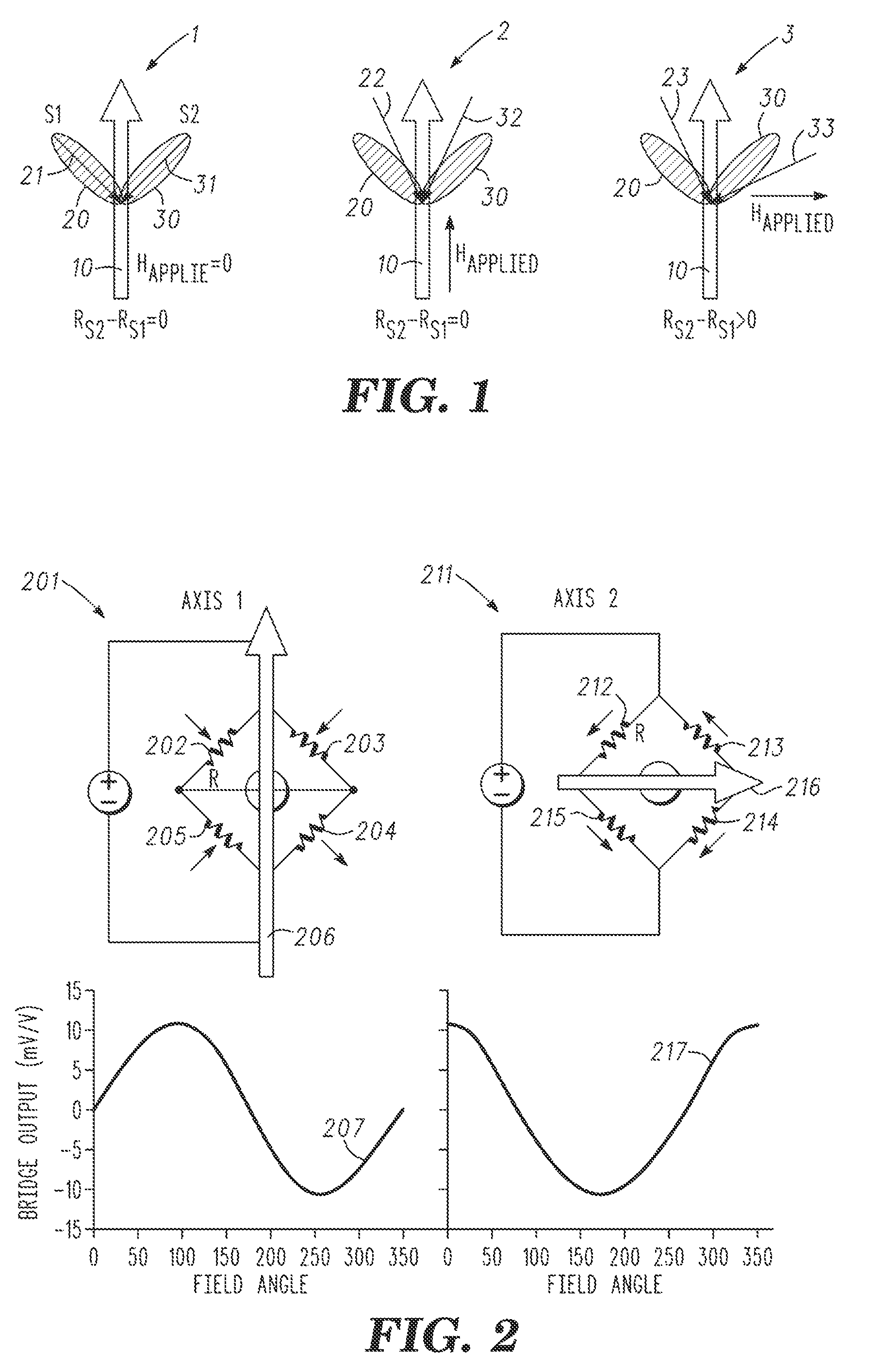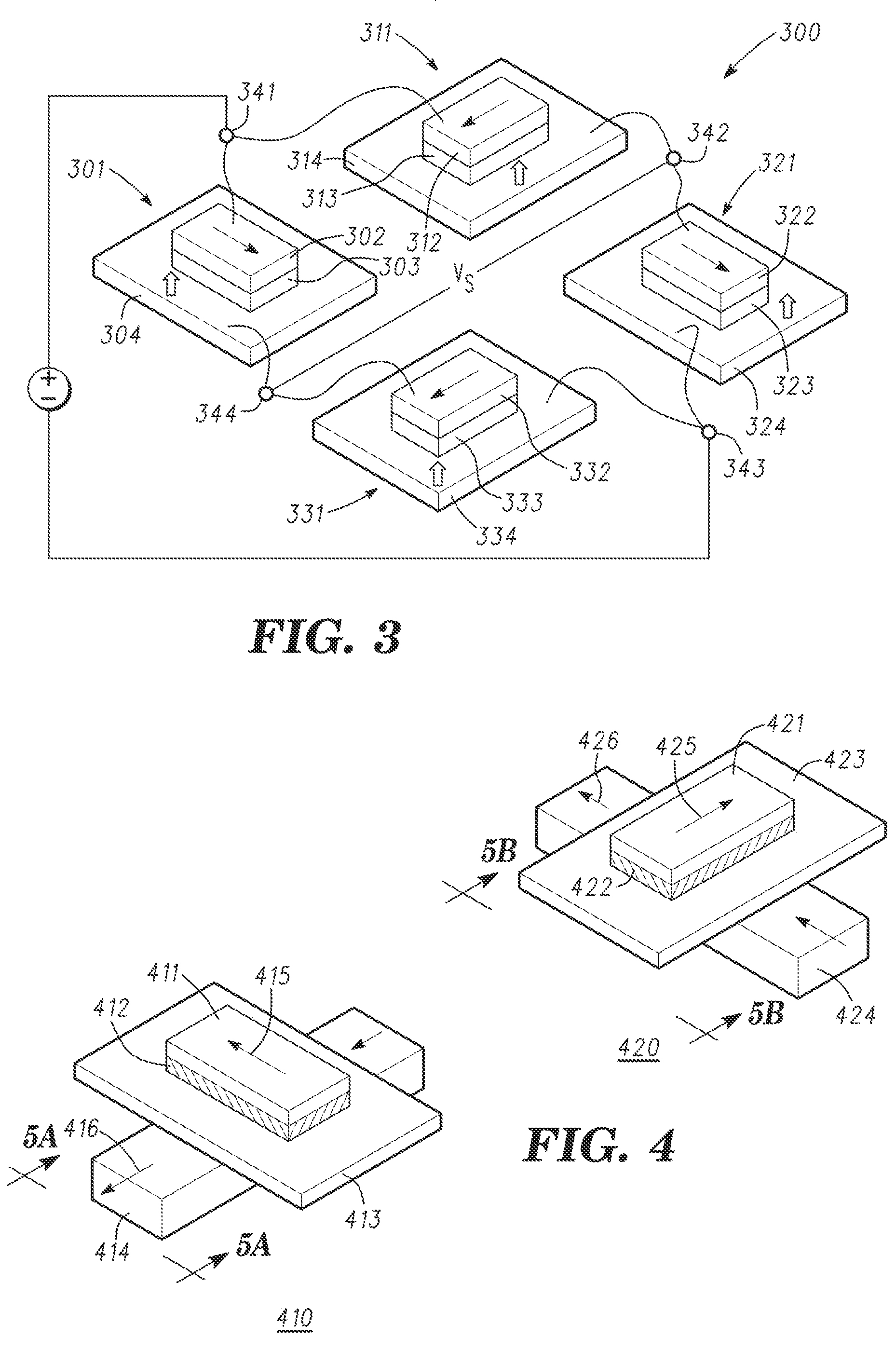Fabrication process and layout for magnetic sensor arrays
a technology of magnetic sensor array and fabrication process, which is applied in the field of magnetic sensor array, can solve the problems of large and expensive auxiliary cmos associated with hall effect sensors, inconvenient device design and layout, and inability to meet the needs of the user, so as to achieve more freedom in device design and layout, and reduce the read signal
- Summary
- Abstract
- Description
- Claims
- Application Information
AI Technical Summary
Benefits of technology
Problems solved by technology
Method used
Image
Examples
Embodiment Construction
[0028]The following detailed description is merely illustrative in nature and is not intended to limit the embodiments of the subject matter or the application and uses of such embodiments. Any implementation described herein as exemplary is not necessarily to be construed as preferred or advantageous over other implementations. Furthermore, there is no intention to be bound by any expressed or implied theory presented in the preceding technical field, background, brief summary, or the following detailed description.
[0029]A magnetic field sensing device includes, for example at least one Wheatstone bridge, wherein each leg comprises an array of magnetic tunnel junctions (MTJs). Each MTJ includes a reference layer, a tunnel barrier (TB), and a sense layer (or sense element). For the highest signal to noise ratio in a given chip area (the densest packing of sense elements), groups of these MTJs may share a common reference layer. The shape of the reference layer may optionally be conf...
PUM
 Login to View More
Login to View More Abstract
Description
Claims
Application Information
 Login to View More
Login to View More - R&D
- Intellectual Property
- Life Sciences
- Materials
- Tech Scout
- Unparalleled Data Quality
- Higher Quality Content
- 60% Fewer Hallucinations
Browse by: Latest US Patents, China's latest patents, Technical Efficacy Thesaurus, Application Domain, Technology Topic, Popular Technical Reports.
© 2025 PatSnap. All rights reserved.Legal|Privacy policy|Modern Slavery Act Transparency Statement|Sitemap|About US| Contact US: help@patsnap.com



